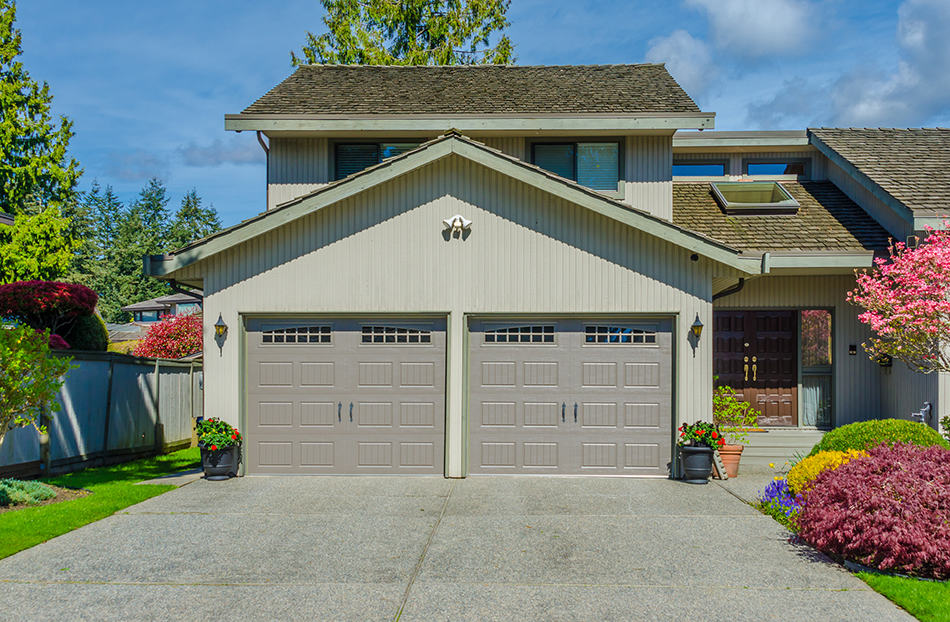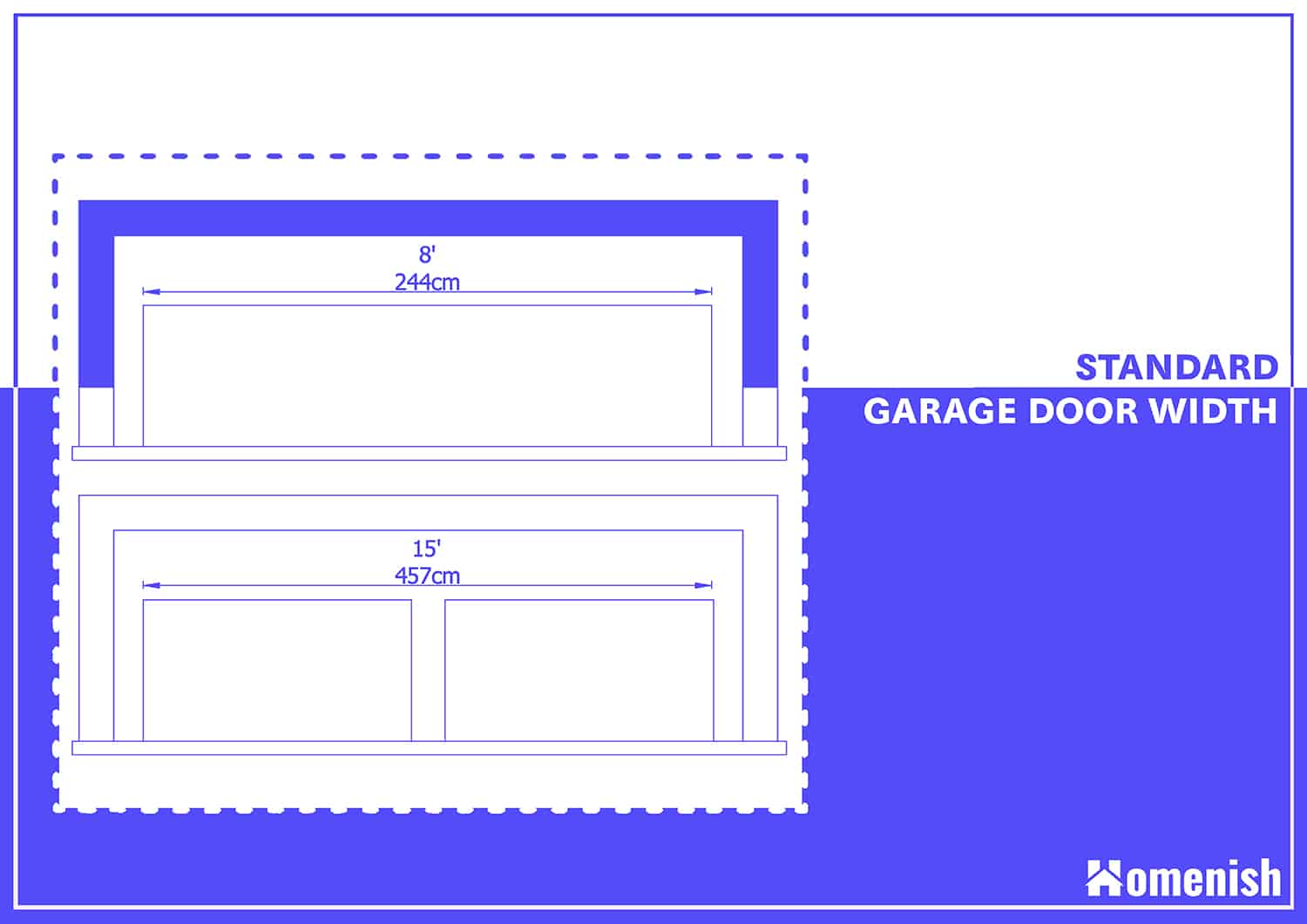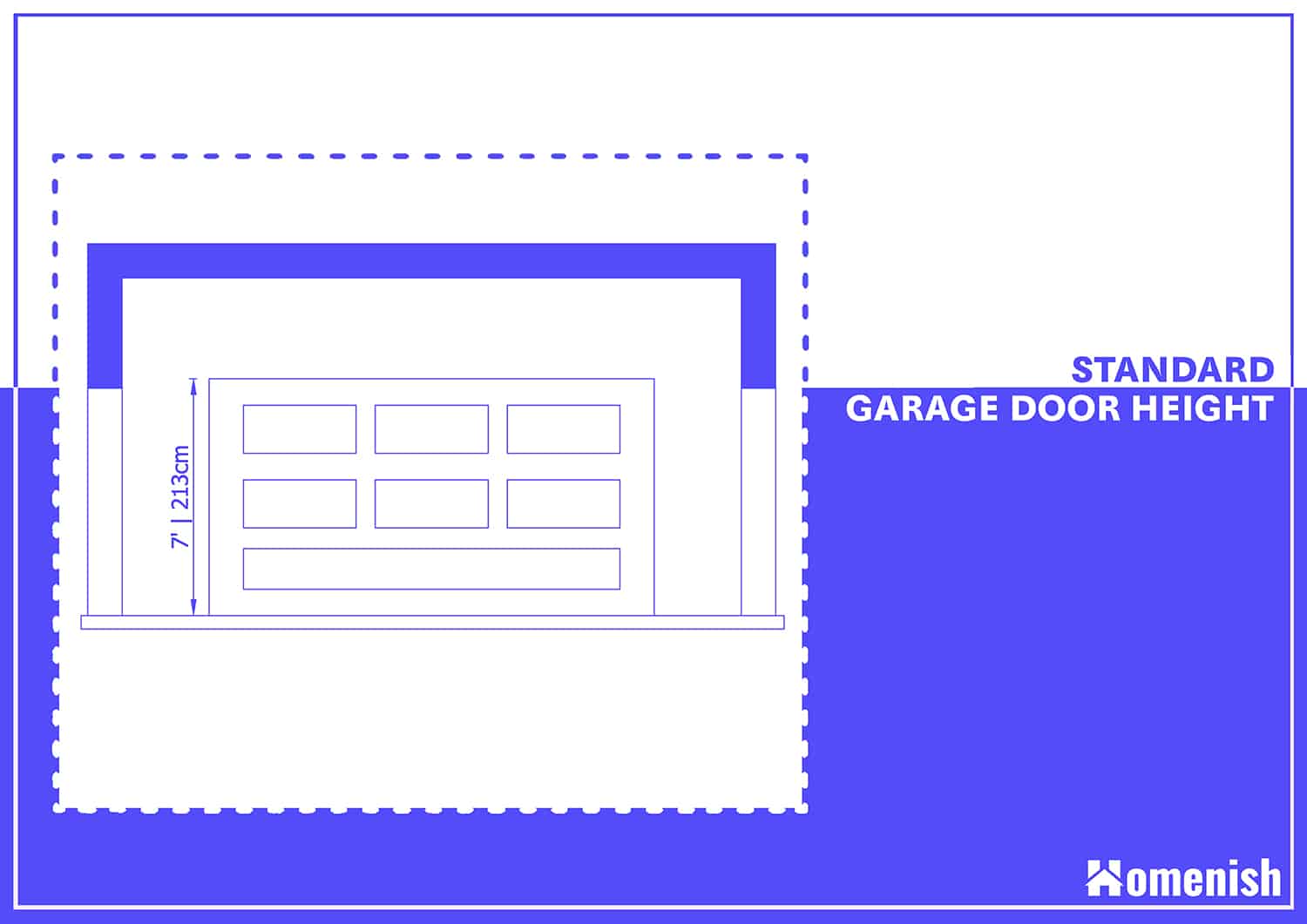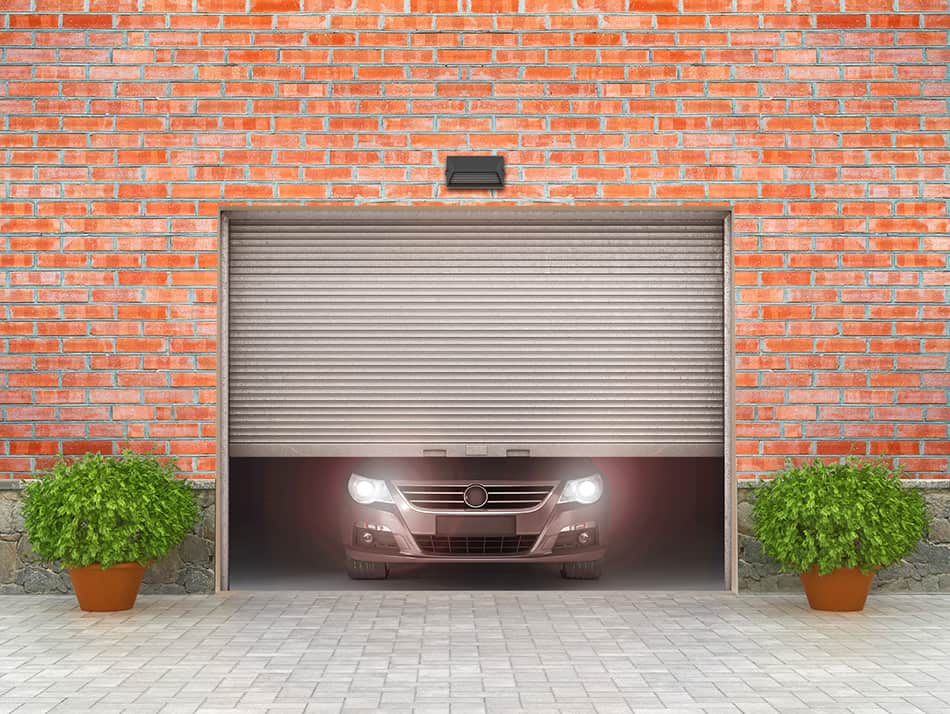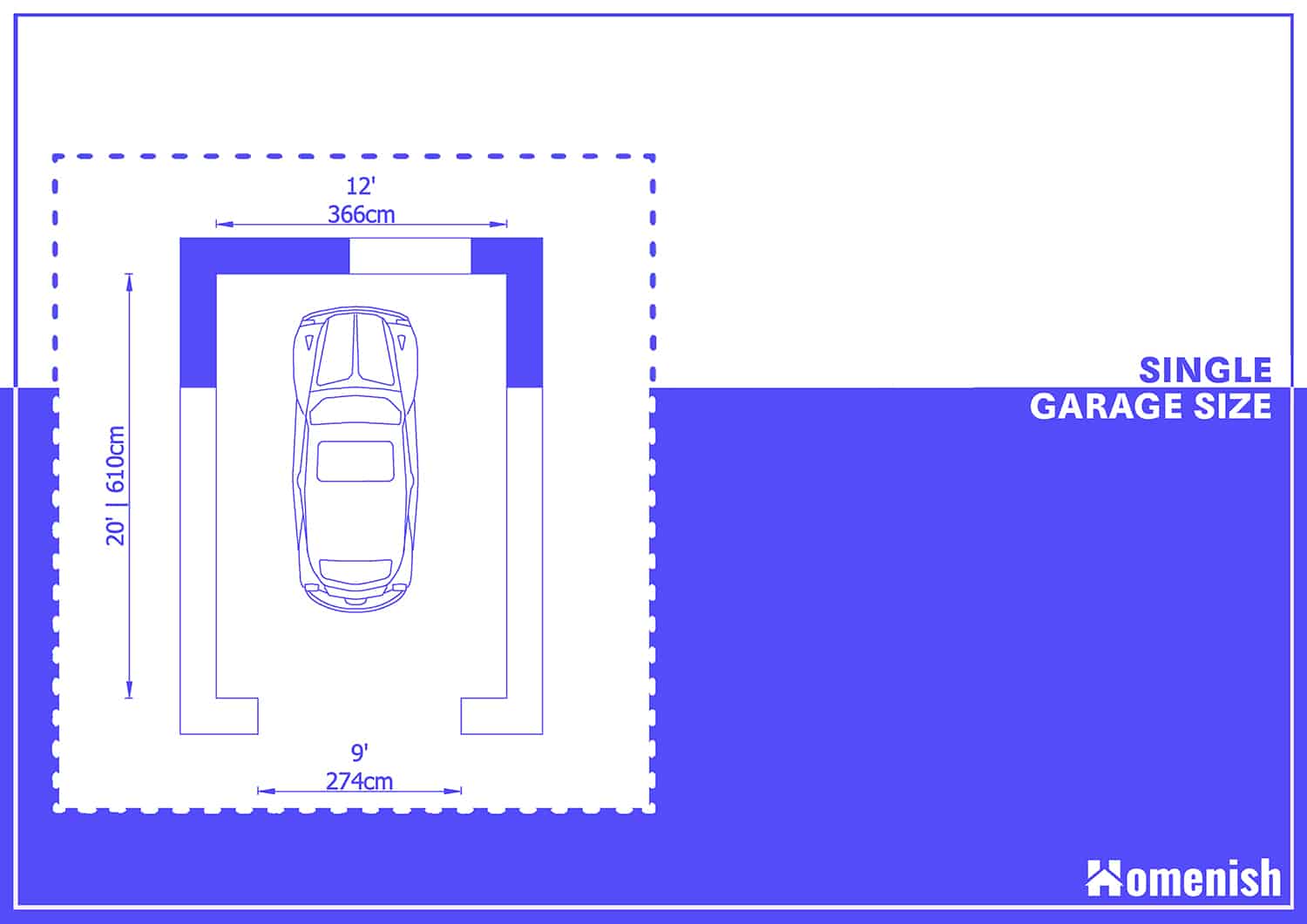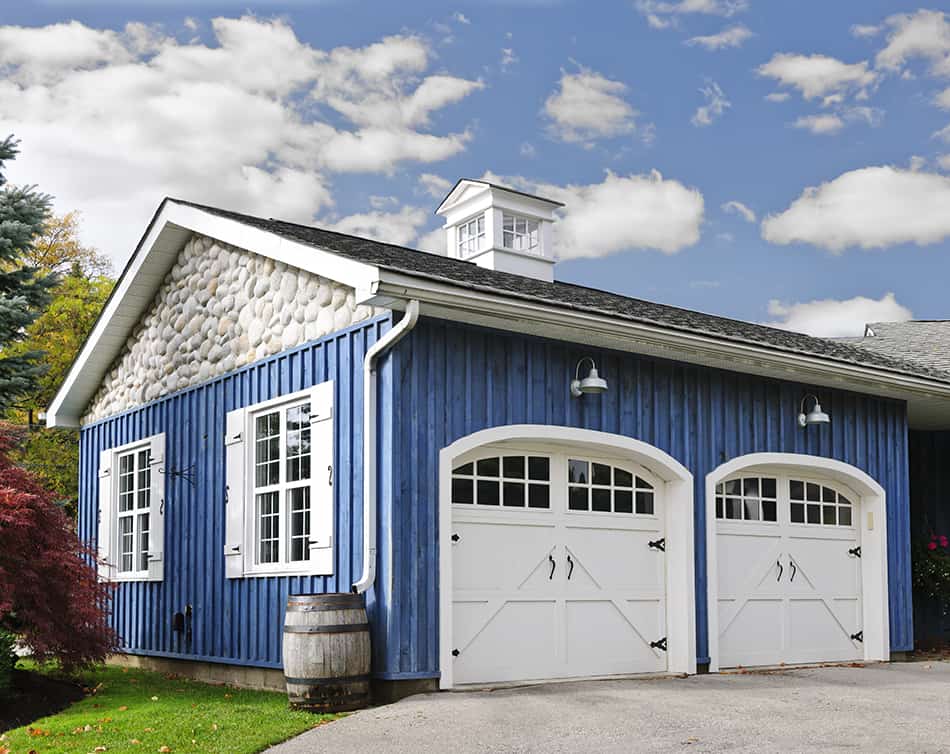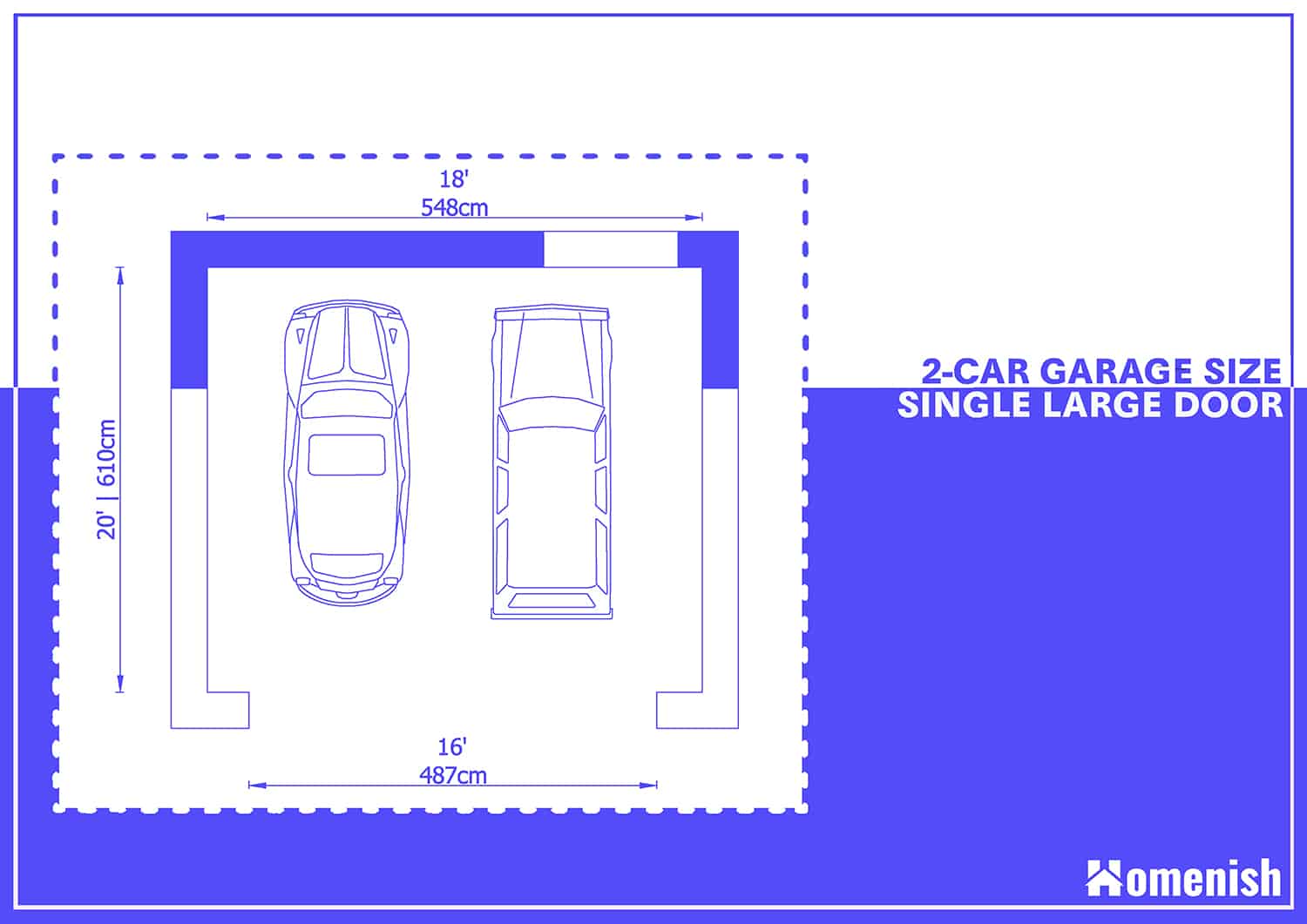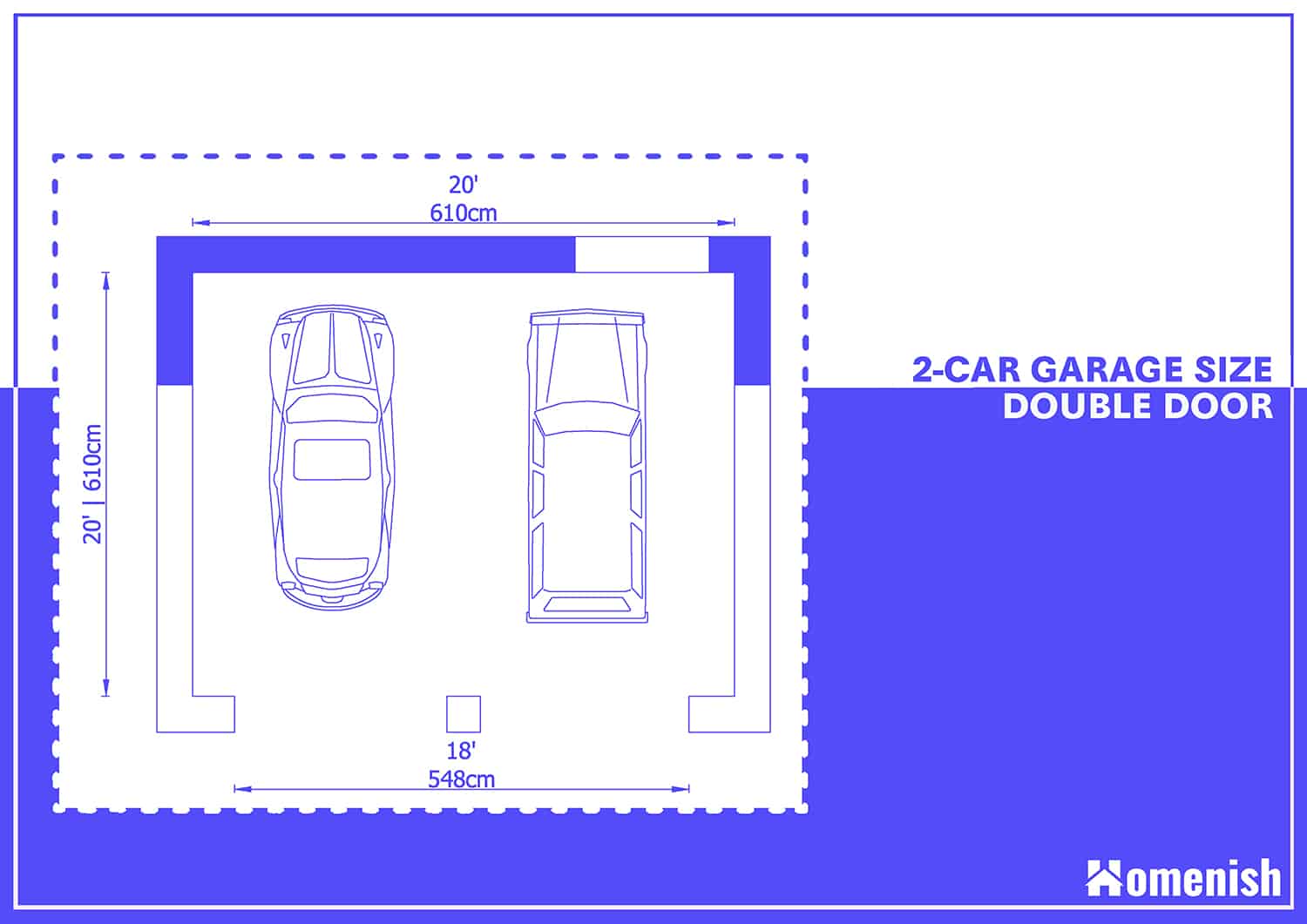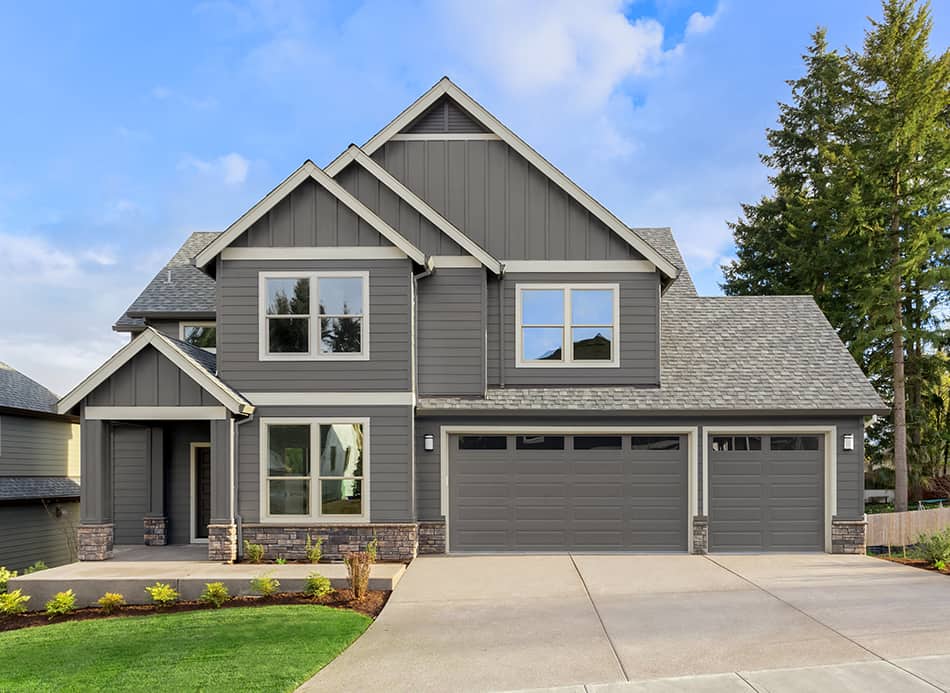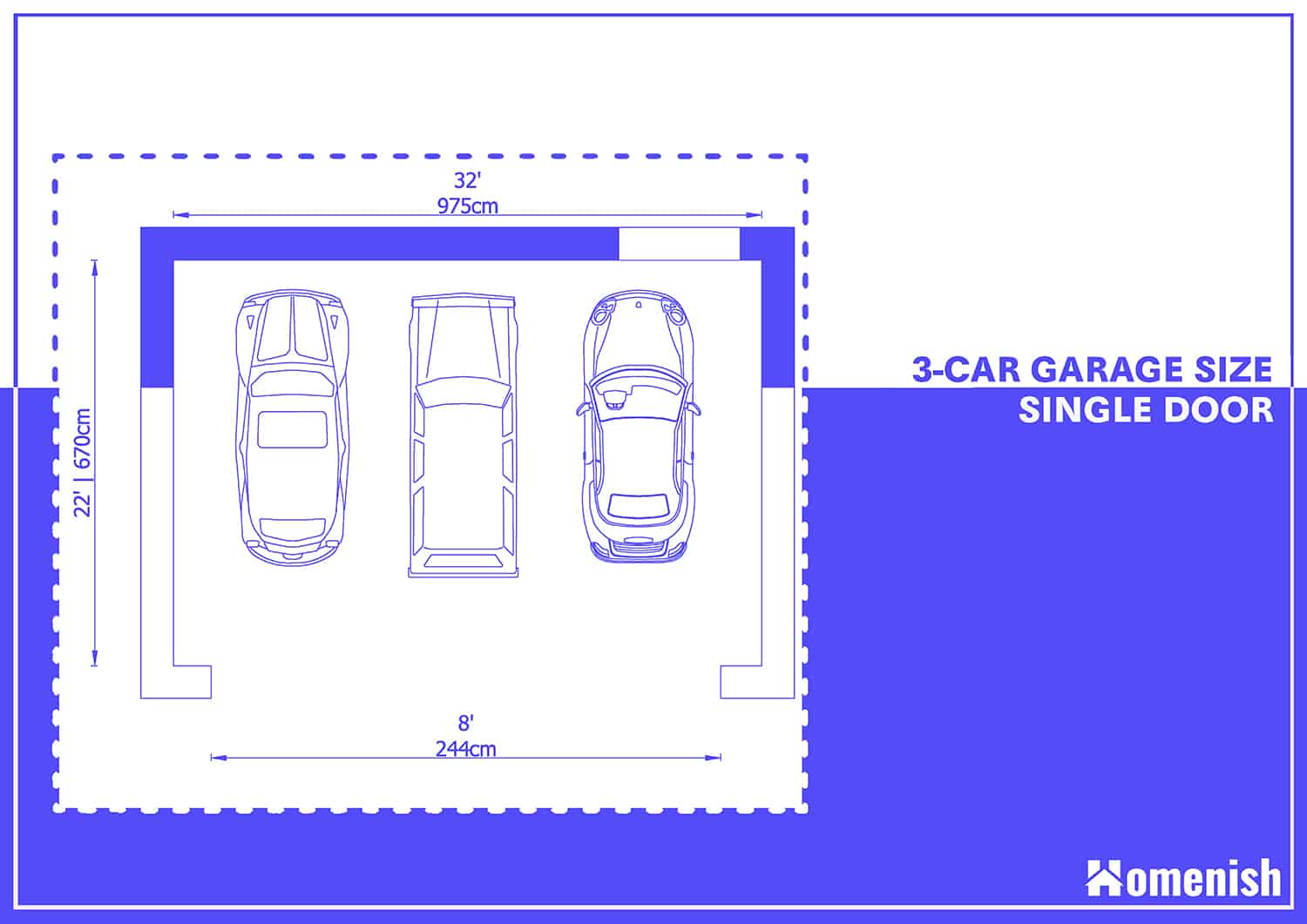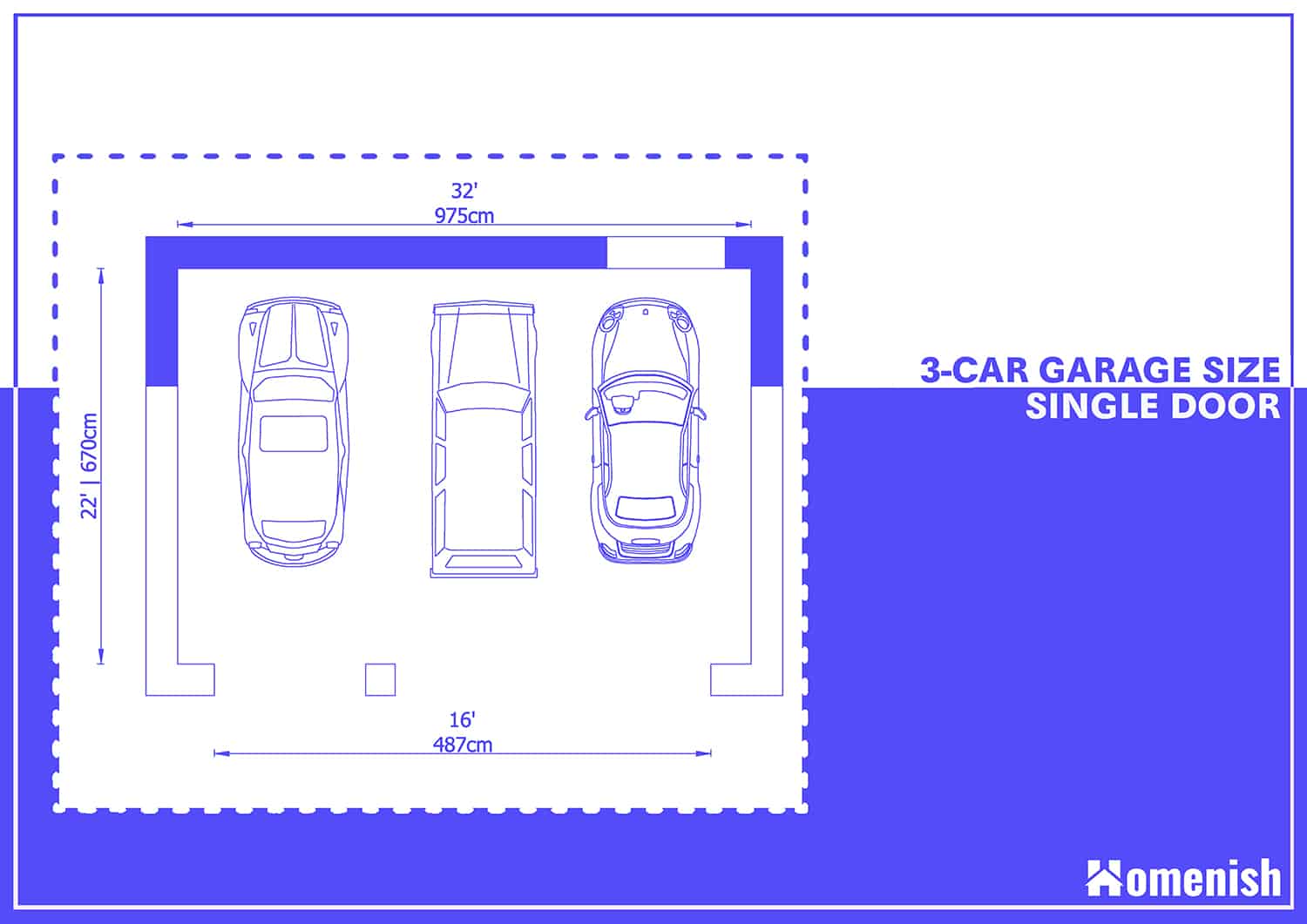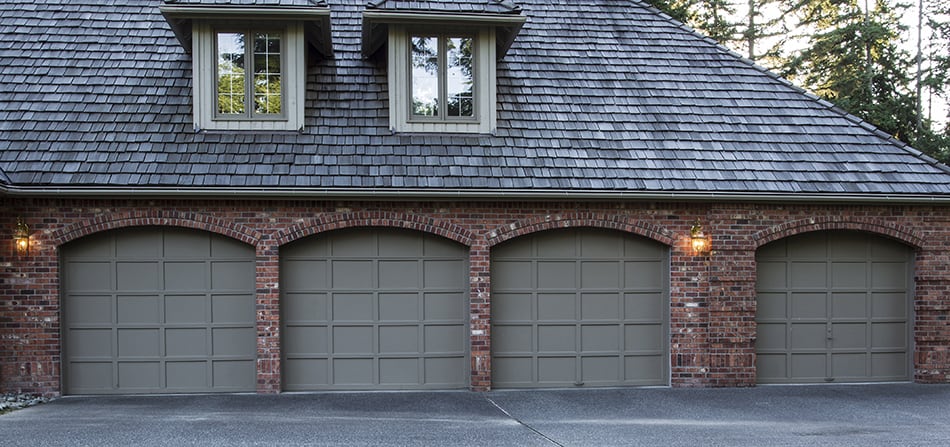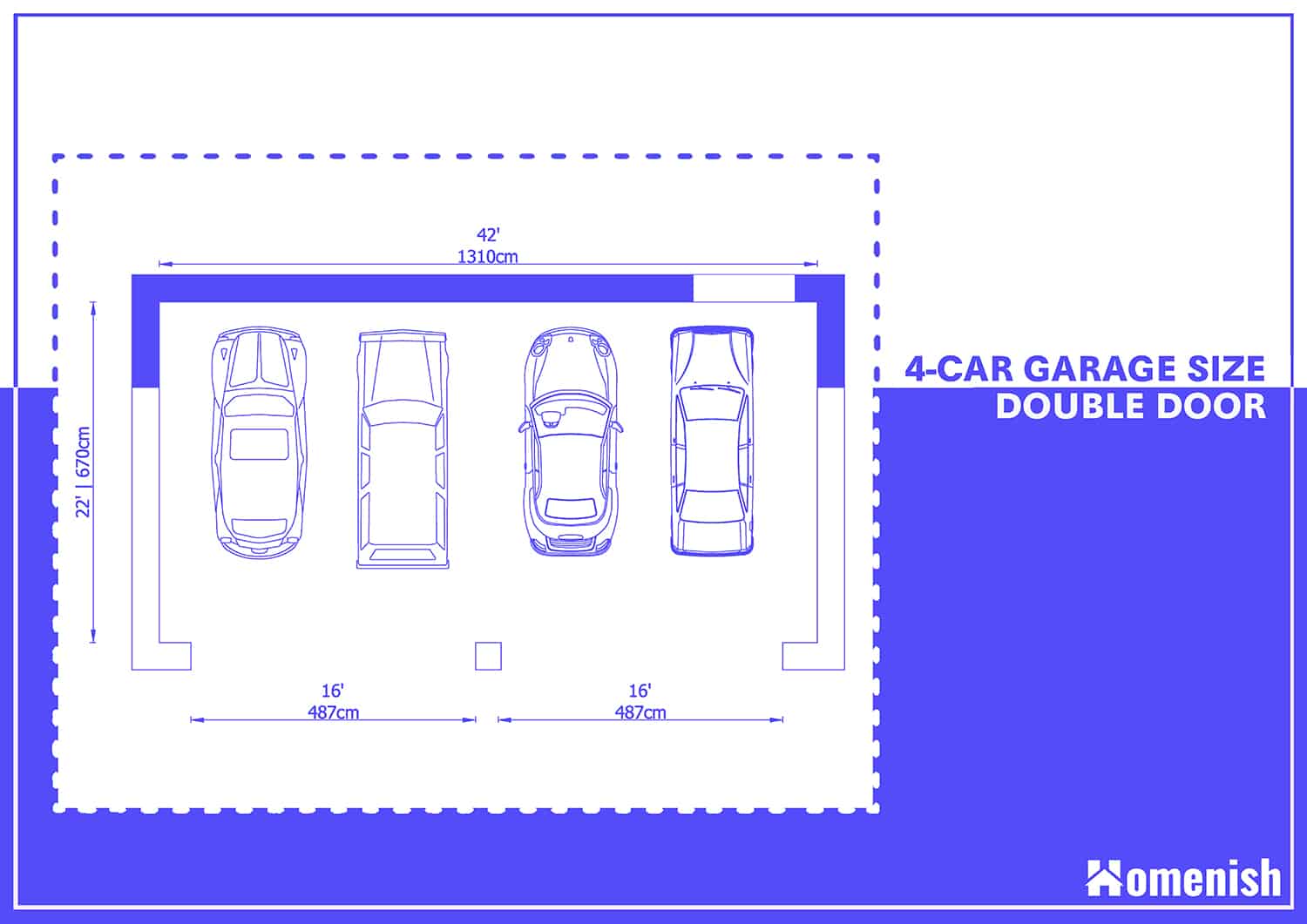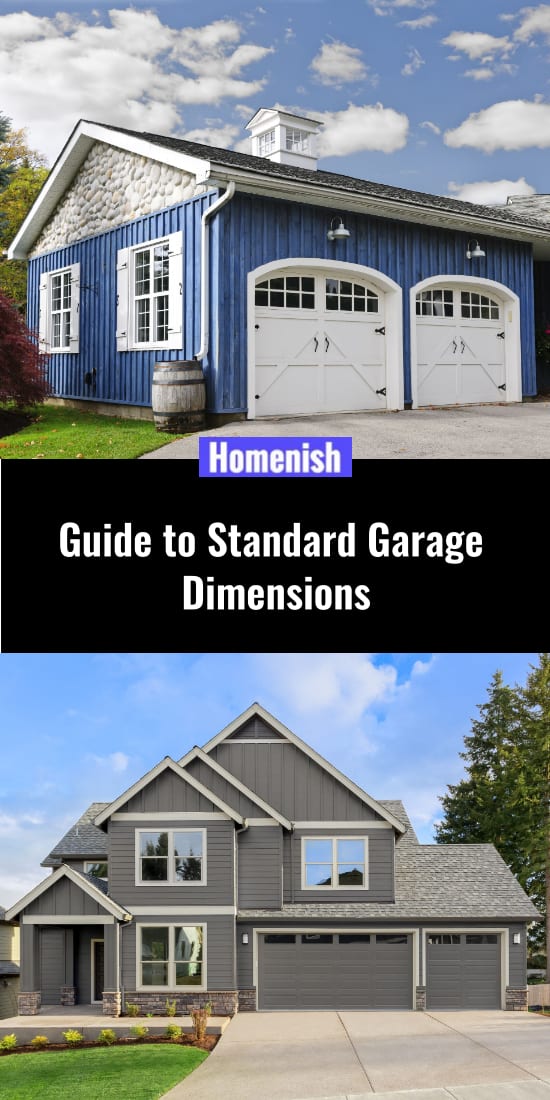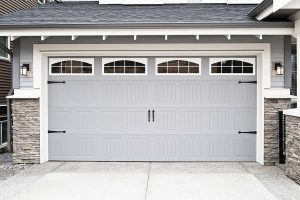There is no denying that cars are essential parts of our daily lives. Today, it’s not unusual to see up to 2 or more cars in most households.
The problem comes when we have to find adequate space to store our vehicles in as well as have additional space for storing our belongings. This is why it’s so important to pay attention to standard garage dimensions when constructing or buying a home.
Here I will explain the most common vehicle dimensions, garage, and door dimensions, as well as some factors to consider before choosing your garage. But before we begin, let’s find out when and why garages became so highly sought by homeowners.
When Did Garages Become So Popular, and Why?
Garages first came on the scene in the early 1900s, but even then, they were just an afterthought. Most households had a small detached shed in the back of their home that was big enough to fit a small car in.
In those days, people had only just learned how to drive, so the need for a garage wasn’t in their priorities.
Eventually, someone called Carl Benz built a roof over his car as shelter and a few years later, C.G Johnson came up with the idea of electric garage doors that made opening and closing the gate easier. As vehicles got bigger, so did garage sizes.
With the growing number of vehicles and the country’s wealth in the 70s, two-car garages became the norm rather than the exception. In fact, up to 18 percent of homes in the US had a one-car garage, and 40 percent had garages for two or more cars.
By the early 2000s, the number of garage owners grew to 63 percent having two-car garages, and 20 percent had garages for three or more cars. In fact, only a mere 5 percent had a one-car garage.
Two-car garages are now the minimal standard and they need to be large enough to accommodate RVs or SUVs. The three and four-car garages are mostly seen in luxury properties and barndominiums. These garages can be a positive selling point of a property.
A garage is now a necessity for vehicle owners as it offers them safety and convenience – not to mention additional storage space. Even if you don’t have a car and decide against building a garage for your home, if you ever decide to sell your home in the future, you may have a hard time finding a buyer as most people need a garage for storing their belongings or vehicles.
Standard Garage Door Width
As a rule of thumb, when deciding on the garage door dimensions, it’s important to allow about two and a half feet from the car to the wall of the garage. This is in order for the car doors to open and for you to exit the vehicle.
The standard width of a single-garage door is around 8 feet. But you can also get 9-foot doors. The width of some single garage doors can be as narrow as 5 feet. For double-garage doors, the minimum width is usually 14 feet, but more commonly 15 or 16 feet.
Standard Garage Door Height
The height of a typical garage door is around 7 feet, but sometimes you can find the height to be up to 8 feet. This is based on the location of the house and the interior walls of the garage. Detached garages are normally 7 to 8 feet high.
On the other hand, if the garage is attached to a house, you have a connecting door from the house to the garage so the height will differ. In some cases, the upper story continues over the garage, thus increasing the ceiling height. This means the garage needs to be a little taller to accommodate the decreased floor height.
The biggest advantage of having a taller ceiling in your garage is the added space for storing gardening tools or bikes on the wall. Just make sure the tools you hang on the wall don’t interfere with the floor or the garage door.
With that in mind, I will now explain the standard vehicle, garage, and door dimensions for 1, 2, 3, and 4 cars.
Common Vehicle Dimensions
Here are some commonly used vehicles with their specific dimensions. Keep these figures into account before diving into the standard garage dimensions.
For SUVs and trucks:
Width: 6 to 7 feet
Length: 16 to 19 feet
Height: 5 to 6 feet
Luxury cars:
Width: 6 to 7 feet
Length: 16 to 18 feet
Height: 4 to 5 feet
For sports or compact cars:
Width: 5 to 6 feet
Length: 14 to 16 feet
Height: 4 to 5 feet
Note: these conversions are based on standardized US dimensions.
Standard Garage and Doorway Dimensions
Single Garage Size
A single garage is the smallest dimension for parking only one car. The advantage of a single garage is that any time you don’t want to store your vehicle in this space, you have the option of converting it into a shed or additional room.
The standard sizes of a single garage are 20 feet in depth, 12 feet in width, and a minimum of 9 feet in the width of the door.
1-car garage key points:
- Garage doorway: 9 feet wide
- Garage interior: 12 feet wide
- Depth: 20 feet
2-Car Garage Size
One of the most popular alternatives to a single-door garage is the double garage with two individual doors of around 9 feet in width. But if you want to save on costs, you can opt for a single large door of approximately 16 feet in width.
To have a double garage, you need a minimum space of 20 feet in width alongside the same depth i.e. 20 feet by 20 feet. This is the extra space for comfortably getting in and out of the vehicle. But some people may even advise you to go for 24 feet by 24 feet in order to have some extra space for storage, a boat, or a motorbike.
2-car garage key points:
- Garage doorway (double doors or one large door): 16 feet wide
- Garage interior: 18 feet wide
- Depth: 20 feet
2-car Garage Plan with One Large Door
2-car Garage Plan with Double Doors
3-Car Garage Size
A three-car garage is quite rare, even in large cities. Large families with adult children are usually the ones to have a three-car garage. So, as the garage is triple in size, we need to allow more space by adding extra distance to the depth.
The depth should be around 22 feet, while the width will be around 32 feet. The cheapest option here is to install a wide door (around 16 feet) and use the additional depth to maneuver.
To put it simpler, the standard garage size for three cars is usually 32 feet by 22 feet. Most families with this type of garage have at least one SUV and two regular-size vehicles. Some may have two SUVs and one small car. But it’s not uncommon to see three large cars so it’s best to allow additional space to accommodate all three.
3-car garage key points:
- Garage doorway (a single door): 8 feet wide
- Garage doorway (double doors): 16 feet wide
- Garage interior: 28 feet wide
- Bay depth: 20 feet
3-car Garage Plan with One Large Door
3-car Garage Plan with Double Doors
4-Car Garage Size
Those who live in luxury properties or barndominiums may have the need for larger garages for storing their farm vehicles, cars, and tools. Large families with two teenagers or more may also have the need for 4-car garages.
Whatever your circumstances, a 4-car garage offers plenty of storage space even if you don’t have 4 cars. With this type of garage, you have the option of storing two regular-size cars and two SUVs or RVs.
4-car garage key points:
- Garage doorway (a double door): 16 feet wide (each)
- Garage interior: 36 feet wide
- Bay depth: 22 feet
The above dimensions should give you a basic idea of how to approach your new garage design.
Factors to Consider Before Planning Your Garage
- Consider the types of vehicles you own before deciding on the garage size. For instance, an SUV takes up more room than a regular car.
- Will you be using the garage as a workshop, storage space for your car, or both? This is an important factor when planning a garage. The space needs to accommodate all your tools, depending on the typical project. Furthermore, will you be storing your motorboat or bikes as well as your car in the garage? Think about all these before building the ideal garage size for your requirements.
- Regulations and zoning codes in most states have minimum garage dimensions, so make sure you know these before planning your design. Depending on which state you live in, some local building codes take into account the door hardware, alarm systems, and the types of garage door openers when determining dimensions. Be sure to cover these issues beforehand.
Final Thoughts
By knowing the average dimensions of single, two, three, and four garages and figuring out exactly how you’ll be using the garage, you can then determine how much space you will need for your new garage.
If you to read or make some design for your garage, feel free to read our guide on ‘ 8 Best Garage Design Software (Free and Paid) ‘
